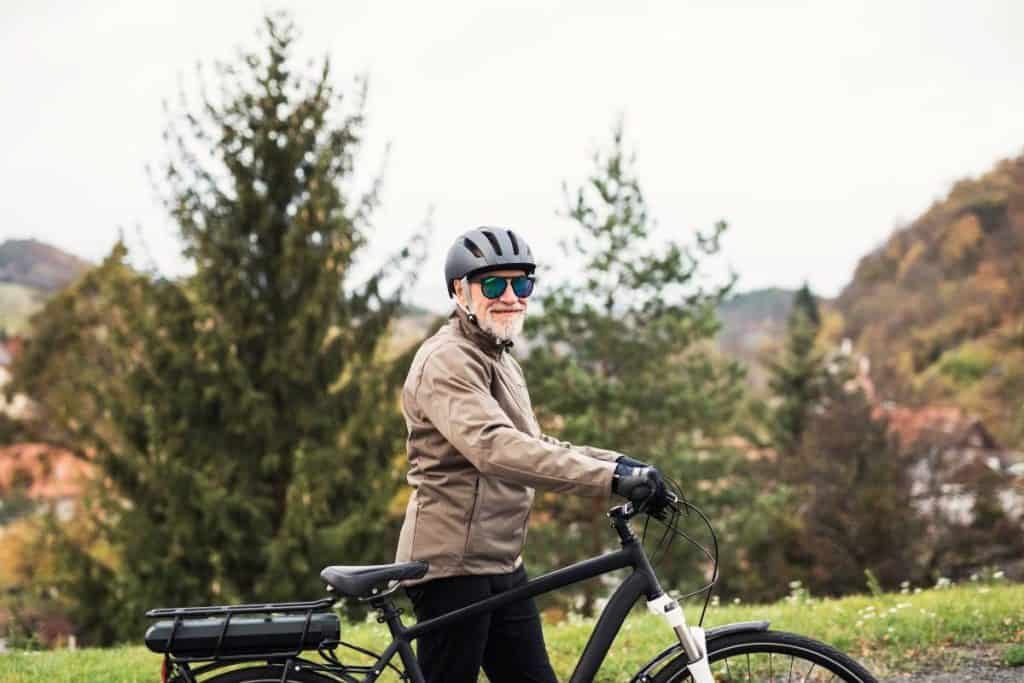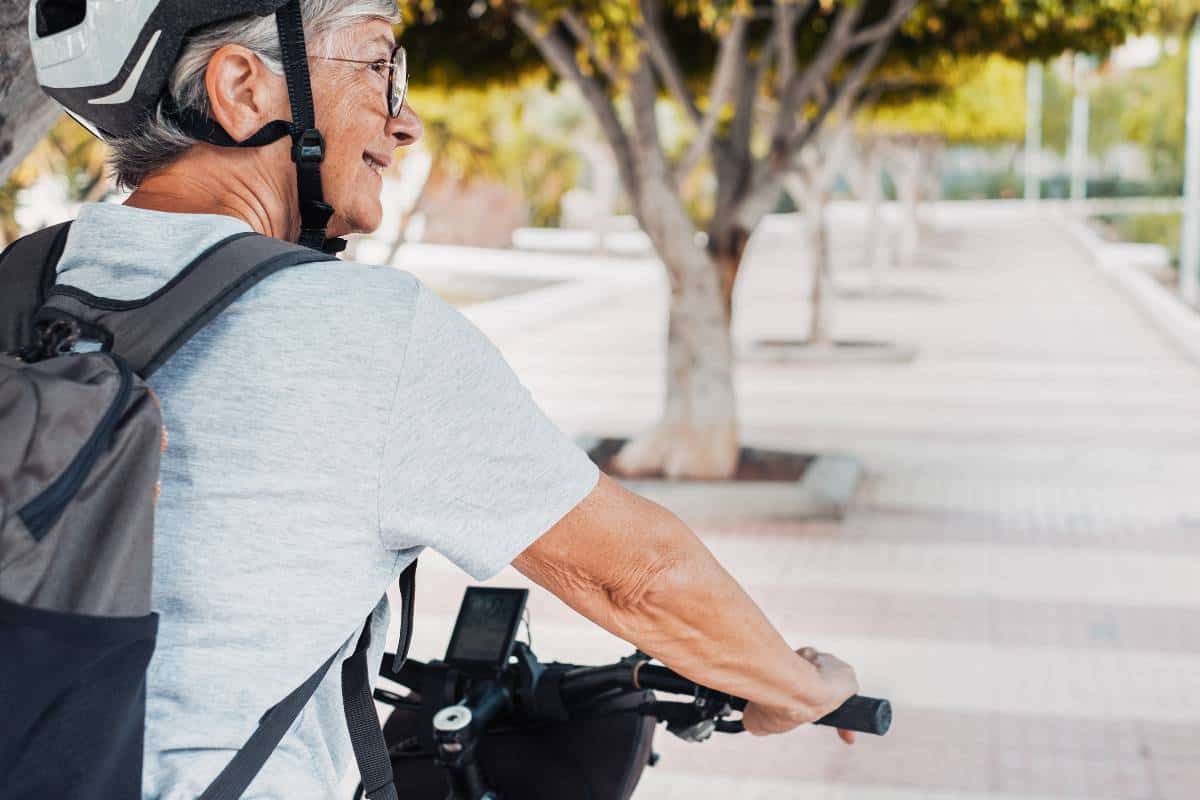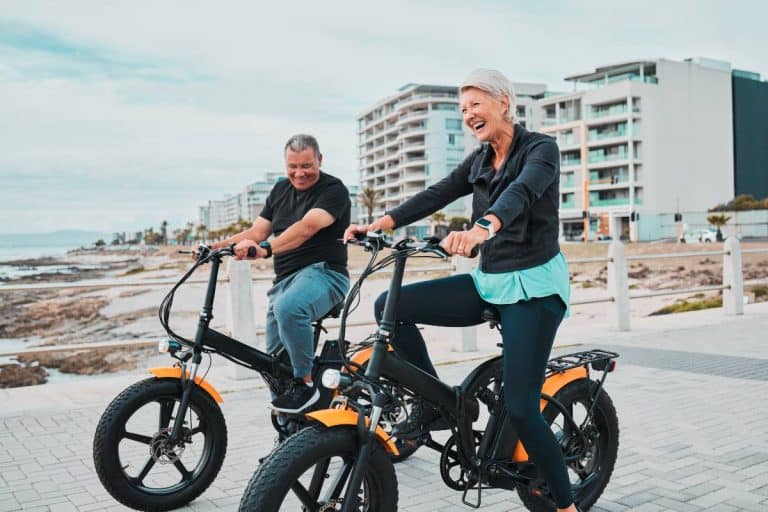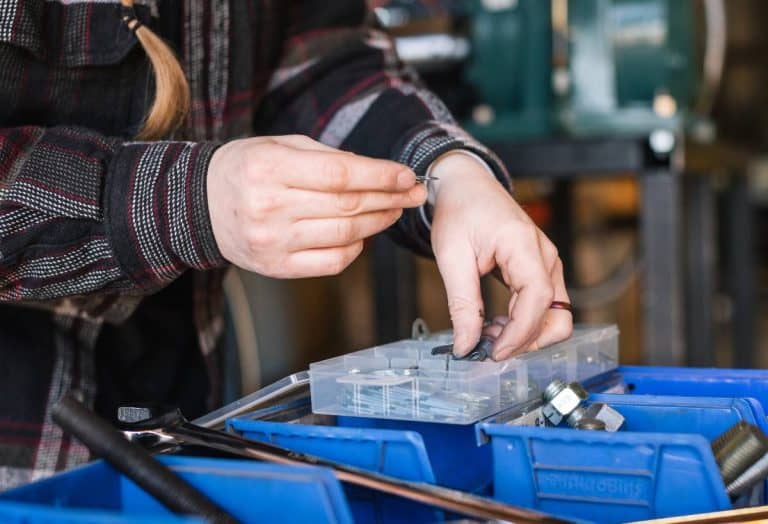E-bikes For Physical Therapy: How Does It Work?
Hey there, fellow eco-warriors! It’s Tom Kitti from Electrik Living, and today, I want to talk about something that’s been buzzing in the world of sustainable living: e-bikes for physical therapy. As someone who’s always on the lookout for ways to promote clean energy and eco-transport, I’ve been blown away by the potential of e-bikes to help people recover from injuries and improve their overall health. So, let’s dive in and explore how these incredible machines are revolutionizing the world of rehab!
Key Takeaways
- E-bikes offer a low-impact, customizable workout for physical therapy patients, promoting recovery and improved overall health.
- Incorporating e-bikes into personalized treatment plans can help patients achieve their rehabilitation goals more effectively.
- With proper safety precautions and maintenance, e-bikes can be a valuable tool in the future of physical therapy.
Harnessing the Power of E-Bikes for Physical Therapy: A Comprehensive Guide
Understanding E-Bikes and Their Features
Before we get into the nitty-gritty of how e-bikes can help with physical therapy, let’s take a quick look at the different types of e-bikes that are perfect for rehab settings:
- Recumbent e-bikes: These low-to-the-ground bikes are great for people with balance issues or limited mobility.
- Upright e-bikes: If you’re looking for a more traditional cycling experience, upright e-bikes are the way to go.
- Folding e-bikes: Perfect for those with limited storage space or who need to transport their bike easily.
Now, let’s talk about the key features that make e-bikes such a game-changer in physical therapy:
- Motor and battery specifications: E-bikes come with various motor and battery options, allowing you to choose the level of assistance you need.
- Pedal assist and throttle options: Some e-bikes offer both pedal assist and throttle, giving you the flexibility to control your workout intensity.
- Display and control settings: Easy-to-read displays and intuitive controls make it simple to adjust your e-bike’s settings on the fly.
Compared to traditional bicycles, e-bikes offer a more accessible and adaptable way for people to engage in low-impact exercise during their rehab journey.
The Benefits of E-Bikes for Physical Therapy
Alright, let’s get to the good stuff: how e-bikes can help you crush your physical therapy goals! One of the biggest advantages of e-bikes is that they provide low-impact exercise. This means that they’re gentle on your joints and muscles, making them ideal for post-surgery recovery. Plus, with customizable workout intensity thanks to adjustable pedal assist levels, e-bikes can accommodate a wide range of fitness levels and conditions.
But the benefits don’t stop there! E-bikes can also help improve your cardiovascular health by increasing your heart rate and cycling intensity. And because they make exercise more enjoyable, you’ll be more likely to stick with your rehab routine and reap the rewards of regular physical activity.
Let’s not forget about the psychological benefits, either. Taking your e-bike for a spin in the great outdoors can do wonders for your mental wellbeing, boosting your mood and reducing stress and anxiety. There’s just something about the wind in your hair and the sun on your face that makes everything feel a little brighter, you know?
E-Bikes as a Tool for Rehabilitation
Now, let’s talk about how e-bikes can be specifically used as a tool for rehabilitation. Whether you’re recovering from surgery, managing a chronic condition, or just looking to improve your overall mobility, e-bikes can help you get there.
For post-surgery recovery, e-bikes allow for gradual strength-building and mobility enhancement in a controlled exercise environment. This means you can take things at your own pace and avoid overdoing it, which is key to a successful recovery.
If you’re dealing with a chronic condition like arthritis, e-bikes can help you manage your symptoms through low-impact movement. Regular e-bike use can also improve your muscular endurance and range of motion over time, helping you stay active and independent.
And for those with disabilities or limited mobility, e-bikes offer an adaptive exercise option that can be customized to your specific needs. With the right setup, almost anyone can enjoy the benefits of e-cycling!

Incorporating E-Bikes into Physical Therapy Programs
So, how can you make e-bikes a part of your physical therapy journey? It all starts with assessing your needs and goals. Your physical therapist will evaluate your fitness level and any physical limitations you may have to determine the best e-bike settings and features for your individual needs.
From there, your therapist will develop a personalized treatment plan that incorporates e-bike use alongside other complementary exercises and techniques. This might include strength training for specific muscle groups like your quads and hamstrings or flexibility exercises to improve your range of motion.
As you progress through your rehab journey, your therapist will monitor your progress and make adjustments to your plan as needed. And with the help of e-bike specialists, you’ll have access to the latest technology and expertise to ensure you’re getting the most out of your e-bike experience.
E-Bike Safety and Maintenance
Of course, safety should always be a top priority when using e-bikes for physical therapy. That’s why it’s important to learn proper riding techniques and maintain good posture while cycling. This will help you avoid overexertion and strain, reducing the risk of injury.
It’s also crucial to wear appropriate safety gear like helmets and protective clothing, as well as using accessories like lights and reflectors to increase your visibility on the road.
Finally, regular e-bike maintenance is key to ensuring your ride is always in top shape. This includes things like:
- Properly caring for and charging your battery
- Checking your tire pressure and brakes regularly
- Cleaning and lubricating your bike’s components to keep everything running smoothly
By taking these simple steps, you can enjoy the many benefits of e-biking for physical therapy without any unnecessary risks or setbacks.
Overcoming Barriers and Misconceptions
Despite the many advantages of e-bikes for physical therapy, there are still some common barriers and misconceptions that can hold people back from giving them a try. One of the biggest concerns is often the cost and whether insurance will cover e-bike use for rehab purposes.
Another obstacle can be the perceived complexity of e-bikes and the learning curve involved in using them effectively. However, with the right education and support from healthcare professionals and e-bike specialists, these barriers can be easily overcome.
By sharing success stories and highlighting the tangible benefits of e-bike use in physical therapy, we can help more people see the potential of these amazing machines and feel confident in incorporating them into their own rehab journeys.
Real-World Success Stories and Case Studies
Speaking of success stories, there are countless examples of people who have used e-bikes to achieve incredible results in their physical therapy. From athletes recovering from sports injuries to seniors regaining their mobility and independence, the transformative power of e-cycling is undeniable.
Take Sarah, for example. After undergoing knee surgery, she was struggling to find an exercise routine that was both effective and manageable for her condition. That’s when her physical therapist suggested trying an e-bike. With the ability to customize her workout intensity and gradually increase her strength and endurance, Sarah was able to make a full recovery in record time.
Or consider John, a 75-year-old retiree with chronic arthritis. Before discovering e-bikes, he had resigned himself to a sedentary lifestyle, thinking his days of outdoor activity were behind him. But with the help of a recumbent e-bike and a personalized physical therapy plan, John was able to rediscover his love of cycling and improve his overall health and quality of life.
These are just a couple of examples, but there are countless more out there. Every day, people are using e-bikes to overcome challenges and achieve their physical therapy goals, and that’s something worth celebrating!

The Future of E-Bikes in Physical Therapy
As e-bike technology continues to advance and more people discover the benefits of e-cycling for rehab, the future of e-bikes in physical therapy looks bright. We’re already seeing new innovations like smart e-bikes that can track your progress and provide real-time feedback, as well as virtual reality-enhanced e-bike experiences that make rehab even more engaging and interactive.
And with the potential for widespread adoption in rehab facilities and healthcare settings, e-bikes could soon become a standard tool in the physical therapist’s arsenal. Imagine a world where every rehab center has a fleet of e-bikes available for patients to use, and where e-cycling is a core component of personalized treatment plans. That’s the future we’re working towards at Electrik Living, and it’s an exciting one indeed!
FAQs
How can e-bikes help with injury recovery and rehabilitation?
E-bikes provide low-impact exercise that is gentle on joints and muscles, making them ideal for post-surgery recovery and rehabilitation. The customizable workout intensity allows for gradual strength building and mobility enhancement in a controlled exercise environment.
Can e-bikes be used by people with limited mobility or chronic conditions?
Yes! E-bikes offer adaptive exercise options that can be customized to accommodate various physical limitations and chronic conditions. With the right setup and guidance from a physical therapist, almost anyone can enjoy the benefits of e-cycling.
What safety precautions should be taken when using e-bikes for rehabilitation?
When using e-bikes for physical therapy, it’s important to wear appropriate safety gear like helmets and protective clothing, learn proper riding techniques, and maintain good posture to avoid overexertion and strain. Regular e-bike maintenance, such as checking tire pressure and brakes, is also crucial for ensuring a safe ride.
How can physical therapists incorporate e-bikes into personalized treatment plans?
Physical therapists can assess a patient’s individual needs, fitness level, and goals to determine the best e-bike settings and features for their rehabilitation journey. They can then develop a personalized treatment plan that incorporates e-bike use alongside complementary exercises and techniques, such as strength training and flexibility exercises.
What does the future hold for e-bikes in the field of physical therapy?
As e-bike technology advances and more people recognize the benefits of e-cycling for rehab, the future of e-bikes in physical therapy looks promising. Emerging trends include smart e-bikes that track progress and provide real-time feedback, virtual reality-enhanced e-bike experiences, and the potential for widespread adoption in rehab facilities and healthcare settings.
Conclusion
Well, there you have it, folks—a comprehensive look at the incredible potential of e-bikes for physical therapy. From the customizable workout options and low-impact exercise to the improved cardiovascular health and psychological benefits, it’s clear that e-cycling has a lot to offer for anyone looking to recover from an injury or improve their overall health.
So, if you’re considering incorporating e-bikes into your own physical therapy journey, I encourage you to take the first step today. Talk to your healthcare provider, do your research, and don’t be afraid to give it a try. With the right support and guidance, you too can harness the power of e-bikes to achieve your rehab goals and live your best life.
And if you have any questions or want to learn more about how Electrik Living can help you get started with e-cycling, don’t hesitate to reach out.
Thanks for reading, and happy cycling!






